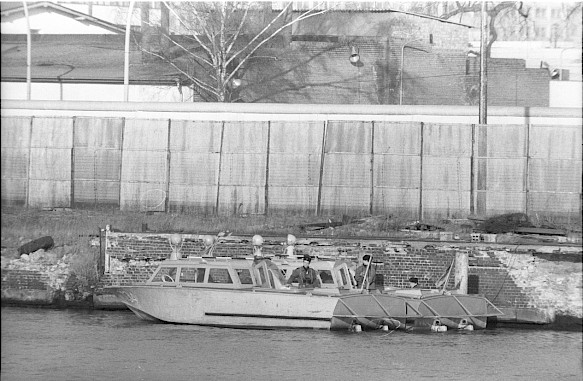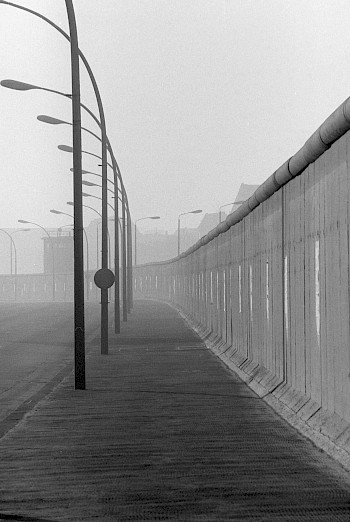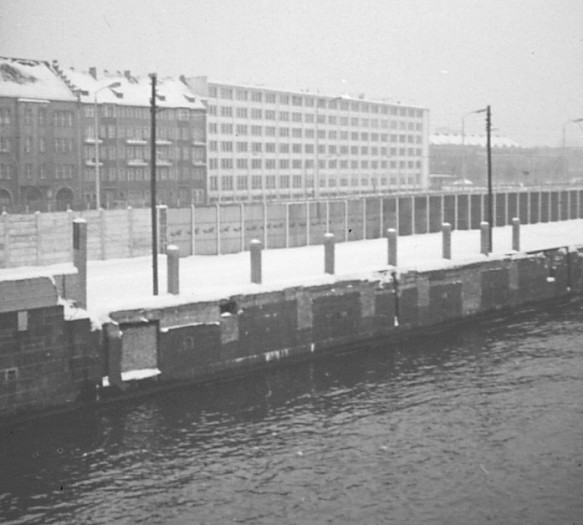Building and Expanding the Wall: Preventing Escape Attempts
Before the Berlin Wall was erected on 13 August 1961, GDR citizens who wanted to flee used the last loophole to West Berlin. Unlike the border to West Germany, which was a three-tiered restricted area that had continually been expanded since 1952, the border between East and West Berlin was still open. At least 2.7 million people fled the GDR between 1949 and 1961, half of whom were younger than 25. In November 1957, "unauthorized border crossings" became a criminal offense in the GDR and were punishable by up to three years in prison. Preparing, helping or "encouraging" an escape could also be punished.

Because the SED's repressive measures failed to stop the exodus from the GDR, in August 1961, the GDR leadership resorted to walling in its citizens. The "anti-fascist protective wall" was meant to stop people from leaving the country once and for all. The initial barrier consisted of barbed wire and hastily erected walls. Over the years, however, the border fortifications were expanded into a wide, multi-layered border strip consisting of many different obstacles. In extreme cases, when an escape could not otherwise be hindered, GDR border guards were expected to shoot escapees. At least 101 people were shot and killed by GDR border guards while trying to escape. Another 39 people died under circumstances directly linked to the GDR border regime.
Escape Assistance and Escape Routes
Although attempting an escape was risky, many people were not deterred. Hundreds of thousands of people managed to reach the West between 1961 and 1989. During the same time period, more than 70,000 GDR citizens were imprisoned for trying to escape. Because it was risky and difficult to cross the border alone, people who wanted to flee sought the help of escape agents.


As the GDR continued to perfect the inner-German border, escape assistance and escape routes became more international. Beginning in 1964, GDR citizens frequently used escape routes across the western borders of Hungary, Bulgaria, Czechoslovakia and Poland. In the 1970s, escape routes through Eastern Bloc countries became popular again, in part because security there was considered laxer and penalties were less severe. The transit routes between West Berlin and West Germany were used in only one-third of all escape attempts. Many people from the GDR also traveled to countries in the West for vacation and simply didn’t return.
A sharp increase in escape attempts characterized 1988. When Hungary dismantled its border with Austria, the first openings appeared in the "Iron Curtain." Here, on 19 August 1989, the largest mass escape since the construction of the Wall took place. On 10 September, Hungary officially opened its border to Austria to accommodate GDR citizens. The "Iron Curtain" had fallen, and more than 25,000 people were able to flee from the GDR to Austria in a very short period. At the same time, other GDR citizens were occupying the embassies of the Federal Republic in Warsaw, Prague and Budapest and were ultimately able to force their emigration.
The End of the GDR
The people who fled, emigrated or occupied the embassies all contributed to making the GDR's border more porous. The German-German policy of détente and international agreements contradicted the bans prohibiting travel and emigration to GDR citizens. At an international press conference held on the evening of 9 November 1989, Politburo member Günter Schabowski announced that, "from now on, without delay," everyone would be allowed to leave the GDR. The conference was broadcast live in the West and the news that the "GDR border was open" spread within seconds. The dynamic set in motion by Schabowski words could not be stopped at the East Berlin border crossings. The GDR border regime’s fate was sealed.

Additional information:
Background information on the construction of the Berlin Wall: https://www.chronik-der-mauer.de/guidedtour/
Podcastfolge zum Mauerbau: Die Podcast-Reihe „Grenzerfahrung“ von der Stiftung Berliner Mauer entstand 2021 anlässlich des 60. Jahrestags des Mauerbaus und wurde gefördert von der Bundesbeauftragten für Kultur und Medien. In der Folge „Stacheldraht, Sprungtücher und Proteste“ werden Hintergründe und Reaktionen auf die Abriegelung Berlins umfangreich erläutert und von Expertinnen und Experten dargestellt. Zeitzeuginnen und Zeitzeugen erinnern sich an den Mauerbau. https://www.stiftung-berliner-mauer.de/de/stiftung/podcast-grenzerfahrung